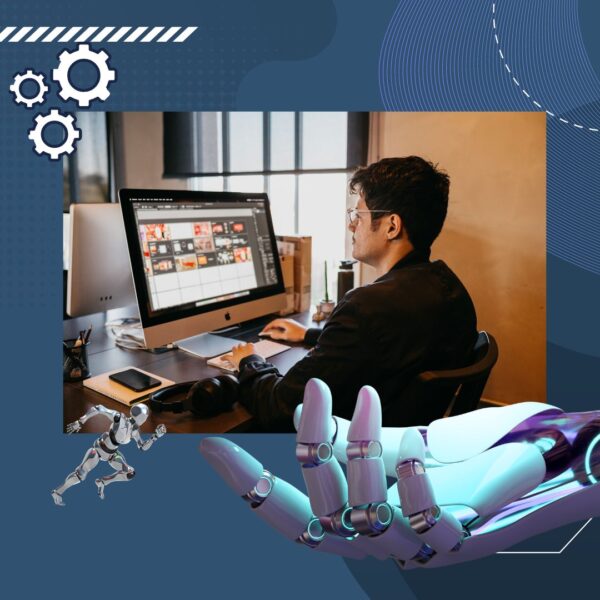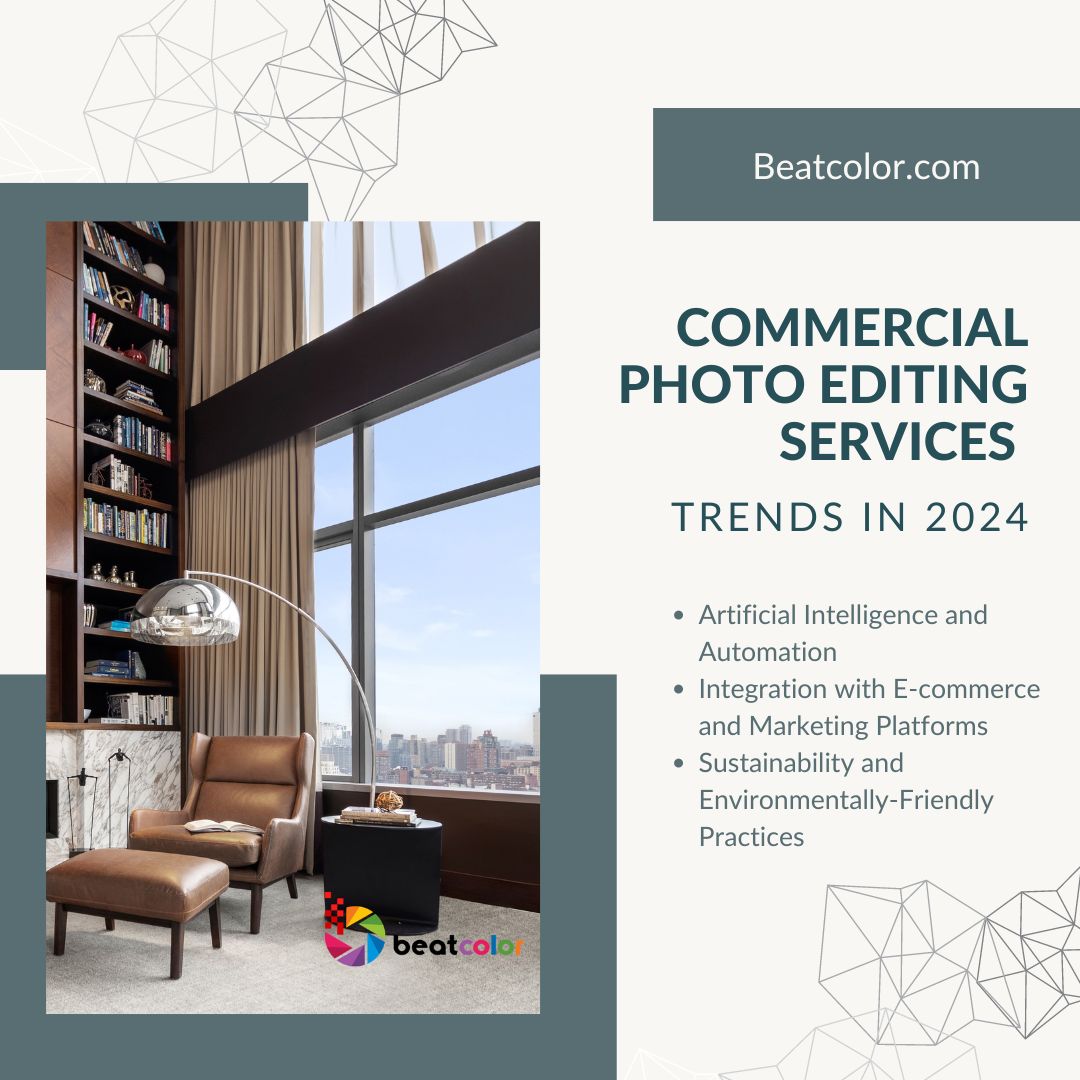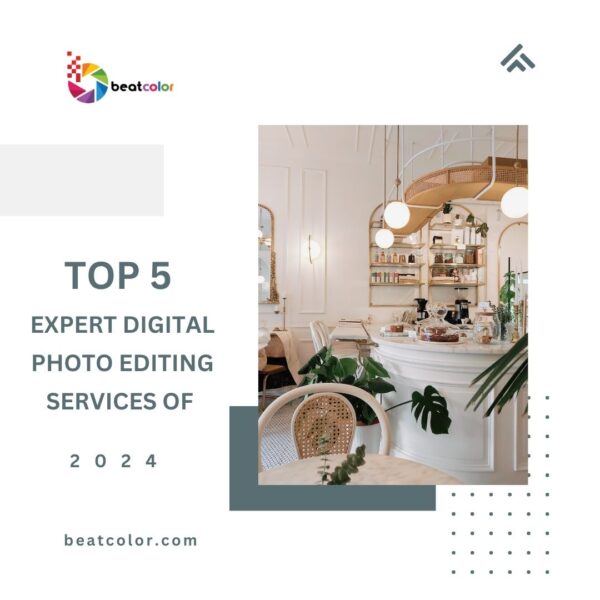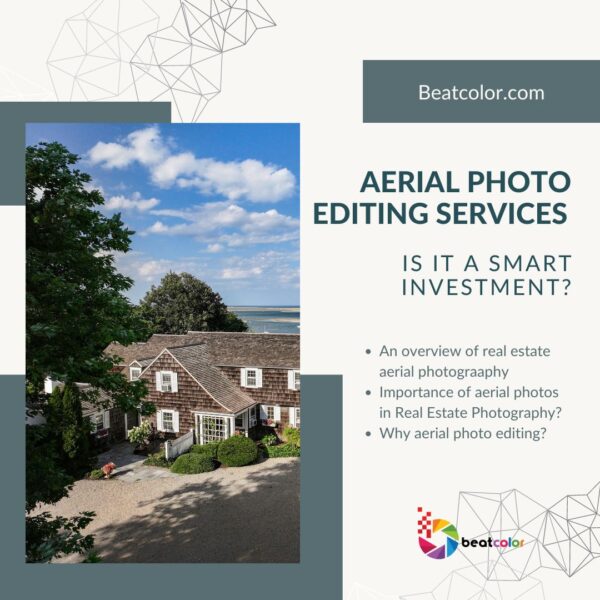Commercial Photo Editing Services Trends and Innovations 2024
Commercial photo editing services have undergone a notable transformation in recent years as the visual content creation landscape has grown. As businesses increasingly rely on high-quality, impactful imagery to captivate their audiences, the demand for innovative and efficient photo editing solutions has skyrocketed.
From the rise of artificial intelligence-powered automation to the integration of cloud-based workflows, the commercial photo editing industry is embracing a new era of technological advancements that are reshaping the way images are processed, enhanced, and delivered.
Artificial Intelligence and Automation
One of the most significant trends shaping the commercial photo editing industry is the widespread adoption of artificial intelligence (AI) and automation. As the capabilities of AI-driven image processing tools continue to advance, commercial photo editing services are leveraging these technologies to streamline their workflows and improve the quality and consistency of their output.
Take, for example, the use of AI-powered tools for automated image segmentation and object detection. These technologies can quickly and accurately identify various elements within an image, such as the subject, background, and individual objects. This allows photo editors to rapidly isolate and manipulate specific areas of an image, dramatically reducing the time and manual effort required for tasks like background removal, image compositing, and product photography.

Moreover, AI-driven color correction and enhancement algorithms are enabling commercial photo editors to achieve superior image quality with greater efficiency. These tools can analyze the color, tone, and lighting of an image, and then apply precise adjustments to optimize the visual impact. This not only saves time but also ensures a high level of consistency across a large volume of images, a critical requirement for many commercial applications.
The integration of machine learning-based tools for image retouching and enhancement is another area where AI is revolutionizing the commercial photo editing industry. Automated techniques for unwanted removal, and other retouching tasks can produce natural-looking
results, freeing up photo editors to focus on more complex and creative aspects of the editing process.
Cloud-Based Workflows and Collaboration
Another significant trend in the commercial photo editing industry is the shift towards cloud-based workflows and collaborative platforms. As businesses and creative teams become more distributed and remote, the need for seamless, cloud-integrated photo editing solutions has become paramount.
Cloud-based photo editing platforms offer a number of key advantages for commercial clients. Firstly, they enable real-time collaboration, allowing teams to review, annotate, and approve edits in a shared, centralized environment. This streamlines the approval process and ensures that all stakeholders are aligned on the final product.
Secondly, cloud-based solutions provide enhanced data security and accessibility. By storing images and project files in secure, cloud-based storage, commercial photo editing services can safeguard their clients’ sensitive visual assets while also allowing for easy, remote access from any device. This is particularly crucial for industries like e-commerce, where product images need to be quickly and securely shared with various team members and partners.
The rise of cloud-based workflow tools has also facilitated the growth of distributed, remote-based photo editing teams. Commercial clients can now tap into a global talent pool of photo editors, allowing them to scale their editing capacity as needed and access specialized skills and expertise. This flexibility and scalability are crucial in industries where image-heavy content needs to be produced rapidly and at high volumes.
Integration commercial photo editing services with E-commerce and Marketing Platforms
As the e-commerce landscape continues to evolve, the commercial photo editing industry has responded by developing deep integrations with leading e-commerce and marketing platforms. This integration allows for seamless, end-to-end management of product imagery and visual assets, from initial photo capture to final optimization and delivery.
For e-commerce businesses, the ability to efficiently edit and optimize product images can have a significant impact on sales and customer engagement. Commercial photo editing services now offer specialized tools and workflows tailored to the unique needs of online retailers, such as 360-degree product photography, virtual product mockups, and automated image resizing for different platforms and devices.
Furthermore, the integration of commercial photo editing services with marketing platforms, such as social media management tools and content creation suites, enables businesses to efficiently produce and distribute high-quality visual content across multiple channels. This streamlined approach not only saves time and resources but also ensures a consistent, cohesive brand identity and visual language throughout a company’s marketing efforts.
Sustainability and Environmentally-Friendly Practices
As the global focus on sustainability and environmental responsibility continues to grow, the commercial photo editing industry is also embracing eco-friendly practices and initiatives. This shift is driven by both client demand and a genuine commitment to reducing the industry’s environmental impact.
One area of focus is the use of energy-efficient and low-emissions technologies in photo editing facilities. This includes the implementation of energy-efficient lighting, climate control systems, and server infrastructure. By minimizing their carbon footprint, commercial photo editing services are demonstrating their dedication to sustainability and appealing to environmentally-conscious clients.

Another trend is the adoption of paperless, digital-first workflows. By transitioning to cloud-based platforms and reducing the reliance on physical printouts and proofs, commercial photo editing services are minimizing waste and resource consumption. This not only benefits the environment but also streamlines the editing and approval processes, leading to increased efficiency and cost savings.
Some commercial photo editing providers are also exploring the use of renewable energy sources, such as solar or wind power, to power their operations. This not only reduces their carbon emissions but also insulates them from fluctuations in energy prices, providing long-term cost savings that can be passed on to their clients.
Future commercial photo editing services
As the commercial photo editing industry continues to evolve, we can expect to see even more innovative and disruptive trends emerge in the years to come. From the integration of augmented reality and virtual reality technologies to the development of advanced image analysis and predictive modeling tools, the future of commercial photo editing promises to be both exciting and transformative.

One potential area of innovation is the use of generative AI models to create entirely new visual content, such as product images, architectural renderings, and even personalized portraits. While still in the early stages of development, these technologies have the potential to revolutionize the way businesses approach visual content creation, offering unprecedented levels of customization and personalization.
Additionally, as the demand for personalized and interactive visual experiences continues to grow, commercial photo editing services may need to incorporate more advanced techniques, such as dynamic image rendering, real-time object manipulation, and seamless integration with immersive digital platforms.
Furthermore, the increasing importance of data-driven decision-making in the business world will likely lead to the development of more sophisticated image analytics tools. These tools could provide commercial clients with valuable insights into the performance and engagement of their visual assets, allowing them to make more informed decisions about their marketing and advertising strategies.
Final Thoughts:
In conclusion, the commercial photo editing industry is undergoing a remarkable transformation, driven by the rapid advancements in technology and the evolving needs of businesses across various sectors. From the integration of AI and automation to the adoption of cloud-based workflows and sustainable practices, these trends and innovations are reshaping the way commercial photo editing services operate and deliver value to their clients. As the industry continues to evolve, we can expect to see even more exciting developments in the years to come, further cementing the critical role of visual content in the modern business landscape.
Related Posts:
6 Unskippable AI Tools for Real Estate Agents
Unlock real estate AI-powered photo editing
The latest real estate photo editing trends 2024What you know about DR Real Estate Photo Editing?







